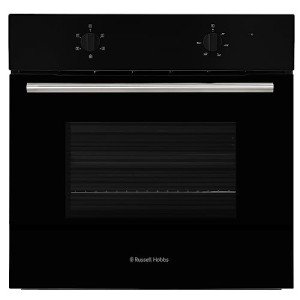Ten Single Built In Ovens That Really Improve Your Life
페이지 정보

본문
The Comprehensive Guide to Single Built-In Ovens: Features, Benefits, and FAQs
Introduction
In modern-day kitchens, the combination of devices is essential to accomplishing a streamlined design. Amongst these home appliances, the built-in oven stands apart as a staple for daily cooking. In particular, single built-in ovens are getting popularity due to their space-saving style and effectiveness. This article explores the features, advantages, and typically asked questions about single built-in ovens, helping homeowners make informed options.
What is a Single Built-In Oven?
A single built-in oven is a cooking appliance developed to be embedded within cabinetry, supplying a smooth look that complements the kitchen's aesthetic. Unlike freestanding ovens, built-in variations offer a series of features and designs that accommodate modern culinary requirements.

Key Features of a Single Built-In Oven
Single built-in ovens featured a range of functions that boost performance and user experience. Here are some of the most essential qualities:
| Feature | Description |
|---|---|
| Size and Capacity | Typically varies from 24 to 30 inches in width; appropriate for different kitchen sizes. |
| Cooking Modes | Numerous settings, including convection, baking, broiling, and sometimes steam cooking. |
| Controls | Digital touch controls or traditional knobs with exact temperature settings. |
| Self-Cleaning Options | Many models consist of self-cleaning functions for simpler maintenance. |
| Energy Efficiency | Created to consume less energy, frequently with an A+ energy score. |
| Security Features | Includes kid locks, cooling systems, and temperature sensing units. |
| Design Options | Readily available in numerous surfaces (stainless-steel, black, and so on) and designs (contemporary, timeless). |
Benefits of Using a Single Built-In Oven
The adoption of single built-in ovens uses many benefits:
- Aesthetics: They develop a contemporary and polished appearance in the kitchen, blending flawlessly with cabinetry.
- Space-Saving: Ideal for smaller sized kitchens, they are designed to enhance space by being built into walls or cabinets.
- Increased Functionality: Many designs include sophisticated cooking technology such as wise functions that enable push-button control via smartphone.
- Easy to Use: With instinctive controls, built-in ovens are easy to use and ideal for both newbie and knowledgeable cooks.
- Improved Cooking Performance: Convection designs circulate hot air for even cooking outcomes.
Popular Brands and Models
A number of brands control the single built-in oven market, each offering special features to cater to consumer choices. Here are some notable ones:
| Brand | Popular Models | Secret Features |
|---|---|---|
| Bosch | HBN8451UC, HBL8453UC | European design, convection heat, Wi-Fi connection. |
| Electrolux | E30SO75GPS, E30SO75PPS | Variations in size, advanced grilling abilities. |
| Samsung | NV51K6650SG | Double convection, smart technology, flexible cooking modes. |
| Whirlpool | WOS51EC0HS | Economical, reliable, self-cleaning functions. |
| LG | LWS3063ST | Smart innovation, air fry mode, sleek visual appeals. |
Setup Considerations
Setting up a single built-in oven includes specific considerations:
- Measurement: Ensure that the space allocated works with the oven's dimensions.
- Ventilation: Adequate air flow needs to be maintained for safety and performance.
- Electrical Needs: Check voltage requirements and guarantee appropriate electric outlets are readily available.
- Professional Installation: While some homeowners may select DIY, working with a professional can mitigate setup problems.
Frequently Asked Questions (FAQs)
How much area is required for a built-in oven?
- A built-in oven typically requires a designated space that varies by design, normally from 24 to 30 inches in width. Constantly refer to the producer's specifications for accurate measurements.
Can I set up a built-in oven by myself?
- While some might attempt a DIY setup, it is typically advised to work with an expert to make sure proper fitting, electrical connections, and ventilation.
Are single built-in ovens more costly than freestanding models?
- Typically, yes. Single built-in ovens tend to cost more due to their design, setup, and extra functions.
What are the differences in between convection and regular ovens?
- Stove have a fan that distributes hot air throughout, resulting in even cooking. Standard ovens count on radiant heat, which may lead to locations and unequal cooking.
What maintenance is required for a built-in oven?
- Regular cleaning, ensuring vents stay unblocked, and monitoring functions. Lots of models provide self-cleaning alternatives, which simplify upkeep.
Single Built In Ovens [more tips here] built-in ovens represent a convergence of style, benefit, and efficiency in contemporary kitchens. With a variety of functions and designs readily available, these ovens deal with various cooking requirements and preferences. Whether you are an ambitious chef or a periodic home cook, acquiring a well-suited single built-in oven can enhance your cooking experience while elevating your kitchen's aesthetic. Cautious factor to consider of features, installation requirements, and upkeep will result in a gratifying financial investment in this essential kitchen appliance.
- 이전글What's The Current Job Market For Emergency Plywood Board Up Professionals? 25.07.07
- 다음글Carnival Colors: A 48-Hour Itinerary for Fukuoka Carnival 25.07.07
댓글목록
등록된 댓글이 없습니다.

